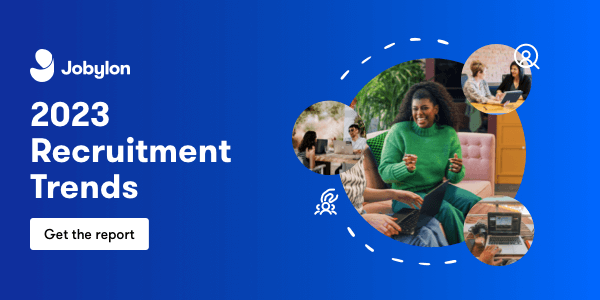A large-scale, pre-pandemic research concluded that more than 25% of US employees would change employers within a year, incurring a mind boggling $600 billion cost for employers. While the average employee turnover rate may differ based on industry, geography, and job market, it is a global phenomenon that deserves to be a key consideration for all HR and business leaders. Leaders know that engaged employees are the lifeblood of a company—and they're not wrong. Maximising the human capital within your organisation not only benefits the overall health of your company, but also creates an environment where employees thrive, stay, and succeed.

Here are 9 crucial action points to help you cultivate a more engaged and thriving workforce:
What is employee engagement?
Employee engagement refers to the emotional commitment and investment an employee has towards their work, their colleagues, and their organization. Engaged employees are motivated to give their best effort, are committed to their employer's goals and values, and have a positive attitude towards their work.
Engaged employees are more likely to feel a sense of fulfillment from their work, which can result in increased job satisfaction, lower turnover rates, and higher productivity levels. Overall, employee engagement is crucial for the success of any organization, as it drives a positive work culture and creates a more productive and satisfied workforce.
Why is employee engagement important?
Employee engagement is vital to any organization's success. Engaged employees are more productive, committed, and likely to stay long-term. They take ownership of their work and strive to perform their best. Engaged employees also provide excellent customer service, as they're invested in the organization's success. Conversely, disengaged employees negatively impact productivity, morale, and customer satisfaction. Prioritizing employee engagement can improve the bottom line and create a positive work culture that attracts and retains top talent. Overall, employee engagement is critical for organizations to succeed in today's competitive business environment.
Employee engagement strategies
1. Hire your best staff
Building a low turnover workforce should start at the beginning of the employee lifecycle. To put it simply, if you hire the wrong people, the working relationship is doomed to fail. How to enhance your selection approach, you ask?
We suggest keeping in mind the holy trinity of recruitment:
- Ability: Can the candidate do the job?
- Drive: Will the candidate do the job?
- Cultural fit: Does the applicant match with our values and ways of working?
2. Invest in meaningful onboarding
One of the most common HR mistakes is seeing onboarding as a checklist, neglecting its importance in setting someone up for success. If done right, the onboarding process can help new joiners to feel “at home” as soon as possible, preventing alienation. Make sure your induction process is designed around the below pillars as suggested by Gallup:
- Employees learn the company’s unique selling points
- New joiners learn how their job help fulfil the company’s mission
- Employees experience the mission and values of the company
Then, use your specific requirements based on geography, industry, and size to refine your process further.
3. Provide a competitive and fair pay
Compensation & Benefits are fundamental elements of any great employee experience. Even if each individual has their own motivators, everyone expects reward and recognition for their efforts. We suggest adopting a sophisticated reward management framework consisting of salary, bonuses, and benefits.
Most effective reward management models are based on the below pillars:
- Compensation philosophy: a clear and transparent compensation story for your people based on your mission, vision, and values.
- Market alignment: an accurate benchmarking for each role based on external data
- Seniority and expertise: tailoring the compensation package for each role based on the level of the job and the expertise of the employee
- Performance: rewarding high performance using bonuses
- Benefits: supplementing your reward packages with relevant benefits based on the needs of your workforce
4. Offer your people flexible working
The vast majority of knowledge jobs don’t require an employee’s physical presence in the office. However, many employers are failing to adjust to a flexible working model, even for employees who performed their job successfully on a remote basis during the pandemic. Flexibility may be one of the key reasons for the current Great Resignation, so best-in-class HR departments retain their top talent through sophisticated flexible working options.
You can think of flexible working in 2 ways:
- Flexible location, e.g. working from home
- Flexible time, e.g. not strictly 9-5
5. Modernise performance management
Traditional performance management systems are flawed. Firstly, a biannual process doesn’t cut it in a business world where people have to move at a high pace. Then, line managers may develop a subjective and biased opinion for team members, favouring some at the expense of others.
We suggest a modern approach to performance management based on the below elements:
- Providing anti-bias training to all line managers
- Offering ongoing feedback to all employees
- Moving away from a rigid process to informal conversations
6. Help your people grow
It is no secret that top talent is motivated by career progression. However, while all employers claim to offer career growth, this is not always the case. From big corporations with complicated and unclear talent processes to early start-ups with a chaotic approach to developing their people, career progression is an area for improvement for many employers.
The key to a successful career progression approach is tailoring it to your people, which is why it is important to keep this in mind:
- Offer many career options, e.g. technical vs management
- Design clear and transparent career paths across the organisation
- Provide on the job training by allowing employees to work on their areas of interest
- Offer certifications and formal training when this is relevant
- Adopt a structured succession planning approach
7. Champion a happy culture
According to the legendary management consultant Peter Drucker, “culture eats strategy for breakfast”. However, despite culture’s importance for any organisation, many employers don’t invest the effort required to build and maintain a culture that allows their people to thrive. Regardless of your unique business needs, encourage a culture praising hard work in line with your values, marginalising toxic behaviours, and accommodating all generations.
8. Be a Diversity & Inclusion leader
Diversity and Inclusion is (finally) in the spotlight. However, while organisations are making efforts to educate their workforce, we still have a long way to go. For example, there are only 4 black CEOs in the Fortune 500. We suggest reducing your voluntary turnover by making sure that all your employees are equally appreciated regardless of their background.
9. Bonus: Give Employees a voice
In his classic book “Exit, Voice, and Loyalty”, Albert Hirschman proposed that when workers find themselves in an unsatisfactory employment situation, they voice their concerns to resolve issues or quit. Indeed, research has proven that when employers give staff a voice, it reduces turnover. Introducing an employee satisfaction survey is the first step to give employees a voice, however, it’s not enough. The most important element to build trust and engagement is to dedicate the resources to follow up on requests, so that you can resolve issues and retain your talent.
Make sure to download our 2023 Recruitment Trend Report for the in-depth insights and how you as a hiring manager can utilize these to maintain a competitive advantage throughout 2023 and beyond.
Last updated:
